試す 金 - 無料
Re-Imagining Birthday Parties
Muse Science Magazine for Kids
|September 2019
Repurposing items in creative ways is a gift to the Earth.

The guests at Mia Blasiole’s ninth birthday party made magic happen. The kids thought outside the box. Or rather, the colored bins. They connected, combined, and reconfigured craft materials into new works of art. But perhaps the most magical aspect of the party? It benefited the planet. Community members had donated the materials used in these amazing creations. The same objects could easily have ended up in a landfill.
“Stuff You Never Imagined”
At Mia’s “Reuse-a-Palooza” party, eight colored bins contained items of matching colors. Staff arranged them in rainbow order. Materials included pipe cleaners, buttons, rings, funnels, and tubes. The inspired kids created one-of-a-kind masterpieces. Mia, for example, created a pair of glasses from wire, hoops, and orange transparent paper. “I learned that you can make cool stuff out of a lot of different materials and make stuff you never imagined,” she says. “I also really liked how we got to make whatever we wanted. It was just really fun.”

Mia’s party is one of several themed parties at Pittsburgh Center for Creative Reuse. This organization in Pittsburgh, Pennsylvania, defines itself as “a non-profit that inspires creativity, conservation, and community engagement through reuse.” A Reuse-a-Palooza party is an open-ended experience.
このストーリーは、Muse Science Magazine for Kids の September 2019 版からのものです。
Magzter GOLD を購読すると、厳選された何千ものプレミアム記事や、10,000 以上の雑誌や新聞にアクセスできます。
すでに購読者ですか? サインイン
Muse Science Magazine for Kids からのその他のストーリー

Muse Science Magazine for Kids
ANIMAL FIREFIGHTER TO THE RESCUE
Can animals help manage the risks of deadly wildfires?
3 mins
Muse July 2025: The Story Behind Wildfires

Muse Science Magazine for Kids
FIRE DANGER
WHY THE RISK OF WILDFIRES KEEPS GROWING
4 mins
Muse July 2025: The Story Behind Wildfires
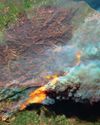
Muse Science Magazine for Kids
The Miller NEW Normal
WHAT TODAY’S WILDFIRES TELL US ABOUT OUR FUTURE
8 mins
Muse July 2025: The Story Behind Wildfires
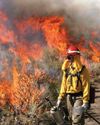
Muse Science Magazine for Kids
WOMEN AND FIREFIGHTING: A GOOD FIT
Jessica Gardetto is a firefighter. Her father was, too. “I grew up with my dad coming home smelling like wildfire and covered in soot,” she says.
1 min
Muse July 2025: The Story Behind Wildfires
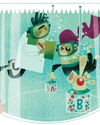
Muse Science Magazine for Kids
What is happening on your fingertips when they get all wrinkly in a hot tub?
—Felix G., age 10, Montana
1 mins
Muse July 2025: The Story Behind Wildfires

Muse Science Magazine for Kids
WHEN the SMOKE CLEARS
THE LINGERING EFFECTS OF THE RECENT PACIFIC PALISADES AND ALTADENA EATON FIRES
6 mins
Muse July 2025: The Story Behind Wildfires

Muse Science Magazine for Kids
PICKING TEAMS
Keep it fair with a strategy that relies on geometry.
2 mins
Muse July 2025: The Story Behind Wildfires
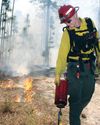
Muse Science Magazine for Kids
SHAN CAMMACK
WILDLIFE BIOLOGIST AND FIRE SAFETY OFFICER
3 mins
Muse July 2025: The Story Behind Wildfires
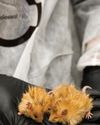
Muse Science Magazine for Kids
Scientists Create Mice With Woolly Mammoth-Like Fur
RESEARCHERS AT A COMPANY IN TEXAS ARE WORKING TO CREATE A LIVING ANIMAL THAT RESEMBLES THE EXTINCT WOOLLY MAMMOTH. Recently, they produced mice with traits of the large mammal. The mice all have coats with mammoth-like fur, and some of the small mammals also have genes that help them store fat. Both features would help the animals survive in the cold Arctic, where the woolly mammoth once lived.
1 min
Muse July 2025: The Story Behind Wildfires

Muse Science Magazine for Kids
Cool Sunshade Added to the Nancy Roman Space Telescope
THE NANCY ROMAN SPACE TELESCOPE IS A NEW TELESCOPE THAT NASA IS BUILDING AND WILL LAUNCH INTO SPACE, LIKELY IN EARLY 2027.
1 min
Muse July 2025: The Story Behind Wildfires
Translate
Change font size
